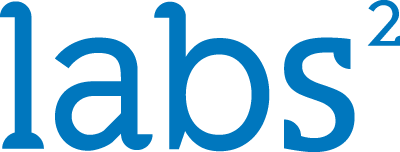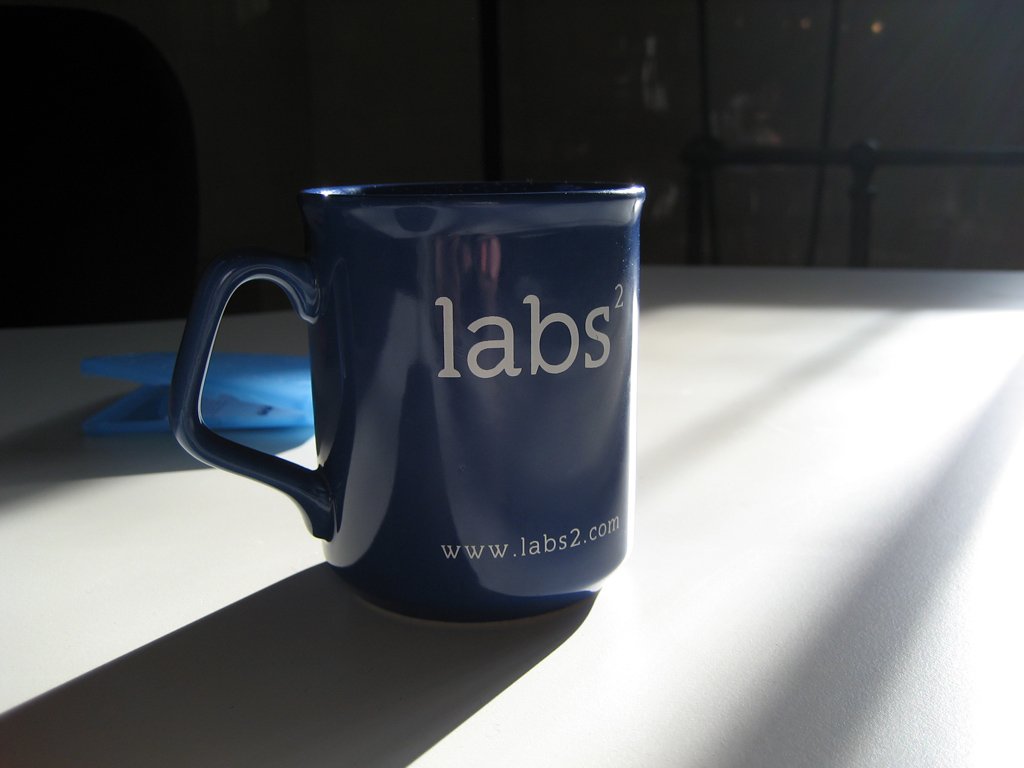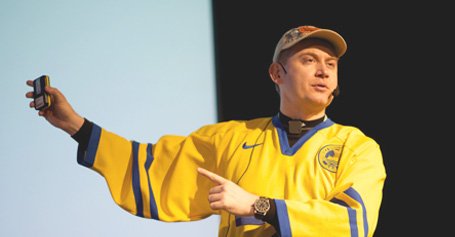
Better broadband Business
Labs² is a software company that delivers the in-house developed business support system BRIKKS for advanced and automated broadband services.

We have the experience
Labs² operates on the market for business support systems used for selling, delivering, invoicing, administering and monitoring broadband services. We have been engaged in this for almost ten years.
Our long-term partnerships with Cisco, Ericsson and other leading suppliers have given Labs² invaluable experience in how modern networks are constructed. Our major contact network and practical experience generate peace of mind for you as a client.
The symmetric broadband revolution
We now see increasingly larger projects being built around the world, new infrastructure entirely adapted to the internet and broadband.
These investments create an increasingly stronger demand for business support systems that can manage the new technology and generate new, rewarding business opportunities for both us and our customers. Our business support system BRIKKS is today ready for delivery on a wide front, the functions are tried and tested and have been in operation for several years in major installations.
We see the future and make something tangible of the potential
Labs² offers a complete solution that covers all parts of the value chain - from active equipment to administrative interfaces for the metropolitan area network, service suppliers and an attractive marketplace for customers including self-provisioning and summary invoices.
Labs² today already has customers that run their entire business operations using BRIKKS exclusively as a business support system.
About BRIKKS
Our turnkey business solution BRIKKS manages the entire value chain from marketplace to end customer, via advanced business processes, to automatic control of underlying network equipment.
A complete business support system for broadband services
A powerful and flexible business support system is today a precondition for being able to compete on the current, highly flexible market where margins are being constantly squeezed. As more and more households gain access to increasingly higher broadband capacity, new business opportunities are being created for both current and new actors.
BRIKKS contains all the essential functions that an operator needs to be able to offer advanced broadband services to consumers. Put briefly, this means that all parts of the business are available via one interface, which creates a good overview and provides all parts with measurable and distinct processes. This is a foundation stone for generating systems with high quality. The five sub-systems can act individually, in cooperation with other sub-systems in accordance with a traditional model or as a complete unit.
Interface to consumer
BRIKKS Customer Portal (BCP)
BCP is the interface between BRIKKS and the consumer, often consisting of a marketplace where the operator's customers can order and handle services. As BCP integrates with other processes in the BRIKKS system, the consumer can, for example, partake in the current status in the ordering process which should result in a delivered broadband connection. This gives the consumers significantly better control over ordered broadband services than what is possible from traditional system solutions.
In this way, BCP creates new commercial possibilities for the operators that choose to use BRIKKS.
Portal for administration
BRIKKS Administration Portal (BAP)
A business support system handles sensitive personal details and substantial financial resources. For this reason, security and system support for allocating rights and following up on what measures the various administrative users of the system have carried out is of great significance.
Through BAP, BRIKKS has an extremely well-developed capacity for managing user rights. This allows Labs² operator customers to create unique logins for each user of the systems and assign rights to these.
Another area that BAP handles is when personnel from many different companies are to manage services designed for the same group of consumers. As the access to information and functionality changes according to the decisions consumers make, BRIKKS benefits greatly from the cooperation between BCP and BAP.
Business logic and functionality
BRIKKS Business System (BBS)
The business support system includes all the necessary functionality for handling all provisioning and financial aspects of advanced broadband services.
Provisioning means the process stages required for delivering a service to the customer. Functionality includes systems for invoicing (debiting, mailings of physical and/or electronic invoices and escalation) and management of subscriptions, for example, prices, starting fees, length of agreements etc.
The functionality for both financial and process control has been developed in cooperation with other BRIKKS systems. In so doing we can achieve a high level of automation.
Communications and networks
BRIKKS Network System (BNS)
Providing consumers with quick service and first-rate quality requires efficient control of the active equipment that modern broadband networks consist of. BNS is a powerful and extremely flexible system for handling all types of active equipment in broadband networks. This means that a customer connection can switch from passive to active mode by BNS ensuring a consumer gets a service delivered just a few seconds after ordering.
BNS is important for enabling the full automation of activating and deactivating broadband services. BNS is neutral in relation to suppliers of active equipment. As a result, an operator customer to Labs² can build automated processes in BNS that include active equipment from several different suppliers.
Learn more on the homepage for BRIKKS

Solutions
Open networks
The BRIKKS business support system is used in the Open Networks customer segment to generate a neutral marketplace where the consumer can select from a wide range of service suppliers and independently choose the mix of suppliers that is best suited for each household. The open networks generate healthy competition that gives consumers greater freedom of choice and competitive prices.
As the open networks make their infrastructures available on equal and neutral terms, excellent conditions are also generated for new service suppliers to reach significant groups of new customers.
Automated networks
Labs² has been working with open networks since the concept was first tested in 1999 by ViaEuropa in Hammarby Sjöstad in Stockholm, and can today as one of few suppliers deliver fully automated open networks. Labs² assesses that the demand for business support systems for open networks is on the rise and that demand will be increasingly international.
Broadband operators
The Broadband Operators customer segment is principally aimed at Internet suppliers and suppliers of Internet-based telephony but also to companies that are looking to develop and sell digital services on the international market. Customers in this area include some of the largest telecom companies and local power companies.
Other actors that are creating operator-like structures are property owners.
In the operator segment, the demand for supplying several services to the same household is growing rapidly. This is to create synergies in the form of revenue from several services but with costs for only one infrastructure and customer service. The clearest example is when the same actor offers Internet, telephony and media services.

Market position
Market structure
Labs² operations are currently focused on providing a complete business support system to three distinct categories: media, operators and network owners. Labs² is able to do this by developing, marketing and selling BRIKKS, the company's in-house developed business support system. The conventional classification is that the industry differentiates between what is known as Operations Support Systems (OSS) and Business Support Systems (BSS).
OSS
The term OSS is used primarily to describe systems used by operators and network owners for handling processes within their business. A principal function of the OSS processes is to control and monitor switches and other equipment for handling deliveries of relevant products and services. Additionally, OSS provides information on the volume of traffic and is used for monitoring including troubleshooting and continuous optimisation of the technology.
BSS
BSS handles all the processes that revolve around the commercial aspects of the operations of media actors, operators and network owners. This means, among other things, a supplementary business system that handles customers and support processes such as order taking, invoice handling and payments. Taken together, BSS/OSS cover the entire process flow of the activities of media actors, operators and network owners.
Traditional actors in BSS/OSS
According to TM Forum a substantial transformation is underway in the BSS/OSS market. This change is assessed to be great enough that TMF has opted to call this area the ”Next Generation OSS/NGOSS”.
Traditionally two schools of thought have emerged; one focusing on proprietary systems with major features from in-house technical personnel and major elements from consultants, and the other focusing on using generic system platforms. The existing, traditional operators have a mix of different solutions with elements of in-house developed systems and general platforms. Both of these traditional methods result in high costs.
Tradition of major actors
The market has been traditionally dominated by major international actors that either provide the actual system platform or carry out the day-to-day maintenance and integration process. To offer an effective and constantly updated business support system, these and similar actors work together with consultancy companies that they have certified, such as IBM and Accenture.
A characteristic feature of the traditional BSS/OSS systems is that they come in a variety of versions where each new version means a new purchase or a substantial updating procedure. As the systems are a ”patchwork quilt” of old and new technologies, constant problems arise when they are to be integrated and this generates additional costs..
A new model emerges
In the light of this, the market for BSS/OSS systems is at a crossroads where even the traditional actors need to adapt to meet new needs and requirements. This also applies to the traditional revenue model that is based on the routine launch of new versions that are now being challenged by a new approach whereby functionality is offered rather than licences. New, small and innovative actors are continually emerging to provide solutions based exclusively on the new technology.
The business solution of the future - BRIKKS
Labs² was founded to utilise the business opportunities that arose when the new technology started to change the terms for Internet and broadband services. The creation of the Swedish company Bredbandsbolaget saw key personnel becoming involved in what was to be Labs² conclusion that even if the broadband technology had developed at a fast rate, the BSS/ OSS systems would not have grown at the same rate. This gave Labs² an advantage as the company had already developed BRIKKS from the start exclusively to satisfy the wishes and requirements associated with network administration.
Labs² made an early assessment that a BSS/OSS system designed in accordance with the ”end-to-end” principle (turnkey solution where all work tasks are handled by a single system) should be able to respond better to the demands of tomorrow.
Labs² customers operate in an increasingly competitive market with squeezed margins. The central element of the new BSS/OSS systems is that they would be able to contribute to the customer's improved margins more evidently than previous solutions. Labs² offers an alternative revenue model that is entirely based on the results and effects of the client.
In addition to Labs² several smaller new actors have seen the opportunity of competing with the traditional global actors. A common feature for many of these is that they have chosen a significantly narrower part of the BSS/OSS area. The market for BSS/OSS systems can be classified in different areas. Most modern products only work in one or a few of these areas. Labs² has opted for another way.
BRIKKS - an end-to-end solution
BRIKKS is designed to ensure that the sub-systems can act individually, in cooperation with other sub-systems in accordance with a traditional model or as a whole unit. Labs² today has customers that run their entire business operations using BRIKKS exclusively as business support system.

History
2024 - 2010
2024
Work continues on several exciting opportunities and projects where we build smarter network services for our customers.
2009-2007
2009
As a further step in Labs²'s streamlining of operations, the company handed over its network and operating operations to ViaEuropa at the beginning of the second quarter. After the transfer, Labs² is the pure software company that it has strived to become in recent years.
2008
In 2008, Labs² continued its strategic investment in building up an international sales partnership. Based on BRIKKS and the reference facility in Lund (GiL), Labs² established a close market collaboration with the world's by far largest supplier of advanced network equipment. Through the sales collaboration, BRIKKS was presented in several sharp customer cases in South America, Eastern Europe and a few cases in the Middle East, among others.
2007
In March 2007, Labs² signed an additional agreement with SkyCom which meant that SkyCom took over all operator activities. The agreement with SkyCom meant improved opportunities for Labs² to work with all other players on the market.
2006-2005
2006
In order to focus on the core business BRIKKS, the operator operations Bredband², Digisip and Via Europa were divested in March 2006 to the venture capital company E-business. The deal meant that brands with customer agreements were sold together with one of Labs²'s subsidiaries. In January 2007, E-business sold Broadband², ABC Broadband and Digisip to Sky-Com, which took over the contractual relationships from Labs².
During 2006, BRIKK's position as the leading business support system for delivering multiple services in open networks in Sweden was consolidated. At the end of 2006, BRIKKS was delivered in over 50 networks compared to around 20 at the beginning of the year. In 2006, the RELAKKS service was also launched.
2005
During the beginning of 2005, operations were focused on three areas, partly the development and sale of BRIKKS, partly on the role as an operator in broadband, IP telephony but also as a communications operator. Gradually during the year, more focus was placed on the development of the BRIKKS business system for the three customer segments - Digital Media, Broadband Operators and Open Networks. In 2005, the Norwegian telephony part was sold to Ventelo.
2004-2001
2004 – 2003
The business began to gain momentum in 2003 with many new agreements, especially in Sweden. Acquisitions were made by the operators Wirelessbolaget AB and DigiSip AB. Turnover increased primarily due to the acquisition of Norwegian Port IT in October 2003.
2002
Labs² and ConNova AB, then the owner of the Billiant software, merged the companies in 2002 and Labs² could now further strengthen its offer aimed at the city network market with Billiant's so-called multi-utility billing system.
2001
In 2001, Dawn Investment bought out Framfab Labs from Framfab. The company was renamed Labs². The operations were focused on adapting BRIKKS to the growing urban network market. Quite soon it was established that a key function of the city network concept is to be able to handle several different actors and services with several payment streams.
2000-1993
2000
In the spring of 2000, Framfab Labs is started as a company within Framfab with Jonas Birgersson as CEO. The number of developers amounted to approximately 100 people.
1999
To broaden the possibilities and the number of areas of use with the service infrastructure, Framfab's software department sought more customers in 1999 besides Bredbandsbolaget. During the first year, several large telecom companies, including Ericsson, British Telecom through German Viag Intercom and BLU in Italy, became users of the BRIKKS business support system.
1998
The cornerstone of broadband expansion was the starting point for the formation of Svenska Bredbandsbolaget AB, which was formed in 1998. The company consisted of Jonas Birgersson (Labs²), Jan Nilsson (former Labs²) and Jan-Erik Fiske (former chairman of the board Labs²). At the same time, a department within Framfab for software development was set up at IDEON in Lund. The thoughts revolved around two orientations of the same cornerstone, on the one hand, the physical infrastructure, broadband with fiber and LAN expansion, and on the other hand the management of the supply, the service infrastructure.
1993
Extensive consulting work was started under the leadership of Jonas Birgersson on Telia's future digital structure. One of the cornerstones of the work was a survey of broadband development in Sweden for Telia.
See more history in the press release archive

Customers
ViaEuropa
ViaEuropa is a Swedish communications operator that constructs and operates fiber networks. They manage many types of networks with different technologies and different business models. In open networks they are a neutral operator, i.e. all service suppliers can deliver their services in the networks on equal terms.
ViaEuropa started operations in 2001 in connection with the new construction of an entirely new district in Hammarby Sjöstad in Stockholm. Straight from the start it was realised how important it was for an all-embracing business support system to manage network operations efficiently. Over the initial years a lot of resources were spent on developing an in-house system. The costs went through the roof, and the decision was taken to convert to BRIKKS.
Today BRIKKS is used in all ViaEuropa's networks throughout Sweden. Through BRIKKS, ViaEuropa has a complete business support system that has rationalised operations and enabled rapid growth in the new networks.
BRIKKS has:
Automated and standardised the processes in all networks which has brought down the running costs.
Lowered the cost of activating a new customer to a fraction of what it was.
Increased customer satisfaction and the average time a customer can remain.
Labs² Corporate governance
-
A Swedish code for corporate governance was prepared in 2004, which observes the “follow and explain” principle. Labs² is not covered by the code for corporate governance as the company is listed on First North. The company has therefore decided not to introduce the code but intends to start applying the code in stages. The pace of the code's application will be principally determined by the rise in costs that are related to the code that are justifiable in relation to company sales and results.
-
The principal task of the Board is to exercise control over management and its way of running the company. The Board's deliberations and decisions are aimed ultimately at promoting the shareholders' interests for growth in value and profit yield. The Board at Labs² includes three members elected at the annual general meeting.
The work is governed by the rules of procedure that the Board adopts at the statutory Board meeting each year. The rules of procedure include the Board members' obligations, what matters are to be addressed and the directives for conducting Board meetings.
The Board is charged with establishing strategies and budgets as well as interim reports and accounting reports. In addition, the Board has to appoint and dismiss the CEO and decide on significant changes to the company's activities.
-
§ 1 Business name
The company's business name is Labs2 Group AB, corporate identity number 556423-7716. The company is a public limited liability company (publ).
§ 2 Registered office
The company Board is registered in Lund municipality.
§ 3 Operations
The object of the company's operations is to, directly or indirectly through subsidiaries, run consultancy operations and development, marketing and sales of products in the fields of data communications, radio communication systems, customer management systems, service distribution systems and customer management services and thereby be engaged in a compatible business.
§ 4 Share capital
The company's share capital is to be made up of a minimum of SEK 25,000,000 and a maximum of SEK 100,000,000.
§ 5 Number of shares
The number of shares is to be a minimum of 250,000,000 and a maximum 1,000,000,000.
§ 6 Board
The Board must, in addition to people who may be nominated in another arrangement pursuant to the law, consist of at least four and at most eight members, and a maximum of four deputies. These members are elected annually at the annual general meeting for the period up to the next annual general meeting.
§ 7 Auditor
For auditing the company's annual report as well as the accounts along with the administration of the Board and CEO, an authorised auditing company or an auditor is appointed, with or without a deputy auditor.
§ 8 Notice
Notices for the annual general meeting must be made through an announcement in the Post and in Domestic Newspapers and in the Svenska Dagbladet newspaper. The deadline for notices must be in accordance with the applicable law.
§ 9 Participation in the annual general meeting
Shareholders wishing to attend the annual general meeting must firstly be entered in writing or in another account in the full share register with respect to prevailing conditions five working days prior to the meeting, and secondly submit an application to arrive at the company no later than 4pm on the day the notice states for the meeting. The last mentioned day may not be a Sunday, other general holiday, Saturday, Midsummer's Eve, Christmas Eve or New Year's Eve and may not fall earlier than five working days before the meeting.
§ 10 Annual general meeting
Annual general meetings are held within six months following the end of each financial year. The annual general meeting or extraordinary general meeting can, in addition to Lund, be held in Stockholm. At the annual general meeting the following matters are to be addressed:
Election of Chair of the meeting;
Establishment and approval of voting list;
Approval of agenda;
Election of two members to check minutes;
Consideration as to whether the meeting has been properly convened;
Presentation of annual report and auditor's report as well as the consolidated accounts and consolidated auditor's report;
Resolutions on the issue of
establishing the income statement and balance sheet and the consolidated income statement and balance sheet;
allocations pertaining to company profit or loss as per the adopted balance sheet;
discharge from liability for Board members and the CEO;
Establishment of the number of Board members and Board deputies that are to be nominated at the meeting as well as the number of auditors;
Establishment of fees for the Board and auditors;
Election of Board members and deputies;
Adoption of guidelines for remuneration for leading officials
Election of auditors and deputy auditors if an election of this type is to be made according to the law;
Other business that is relevant to the meeting as stipulated in the Companies Act (2005:551)
§ 11 Voting rights
At the annual general meeting, all those entitled to vote may vote for the full number of shares that they own and represent.
§ 12 Financial year
The company's financial year must cover the calendar year.
§ 13 Record day provision
The company's shares must be registered in a reconciliation register in accordance with the law (1998:1479) regarding Accounting of Financial Instruments.
-
Labs² Group AB (publ) delisted by its on decision from First North on the 21th of November 2011. There is currently no organized trade of the Labs² Group AB shares. The share are still managed by the Euroclear.

Executive group
Jonas Birgersson
Board member and CEO at Labs². Born in 1971. Birgersson has previously founded Framtidsfabriken where he was CEO and Svenska Bredbandsbolaget where he served as Chairman of the Board.

Contact
Feel free to contact us.
E-mail
info@labs2.com
Address
Labs² Group AB
Winstrupsgatan 1
222 22 Lund
Phone
+46 (0)46 - 540 01 00
Press
Additonal information can be found on our page for press releases.
















